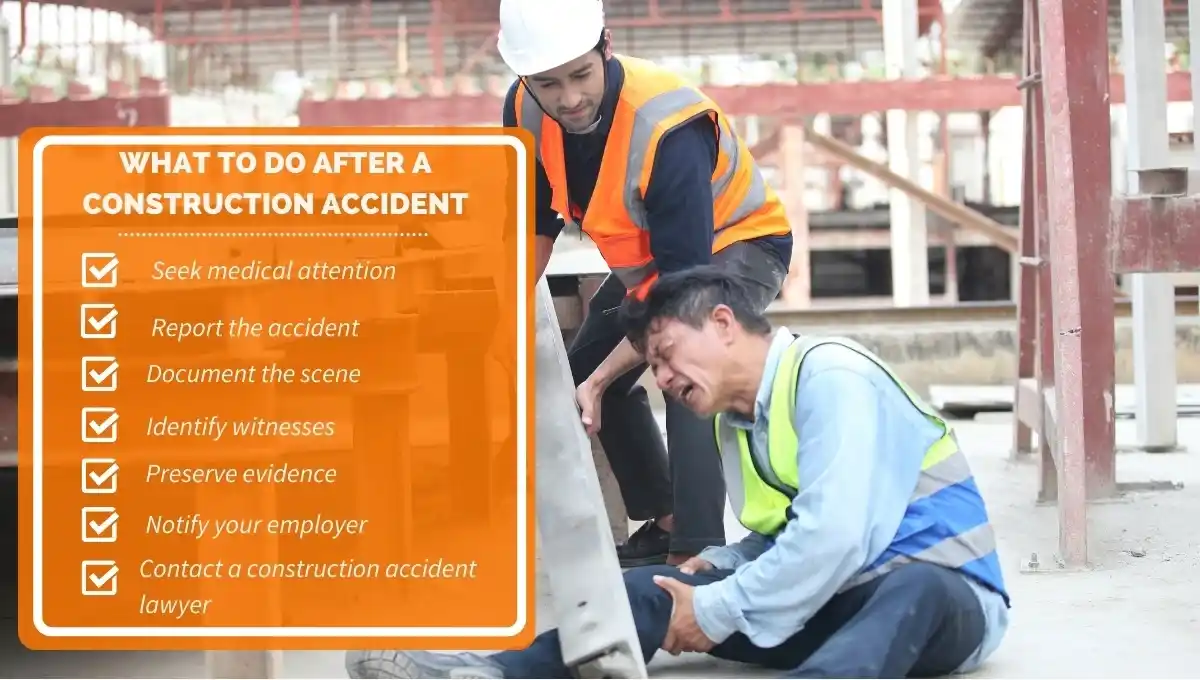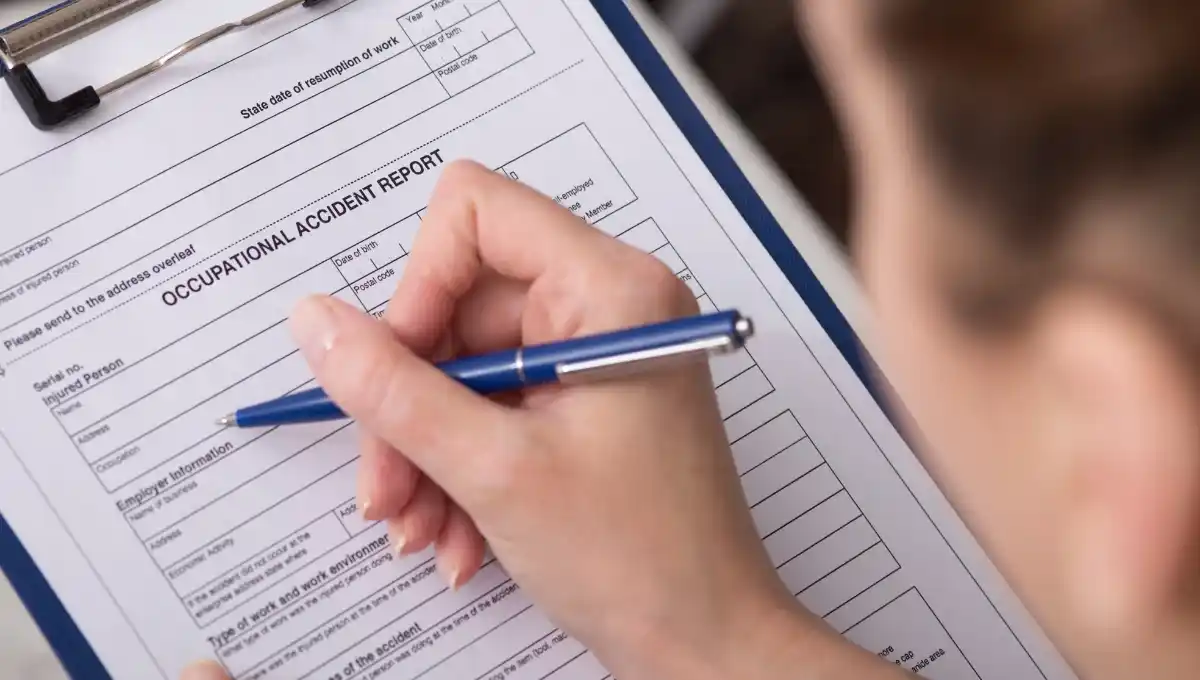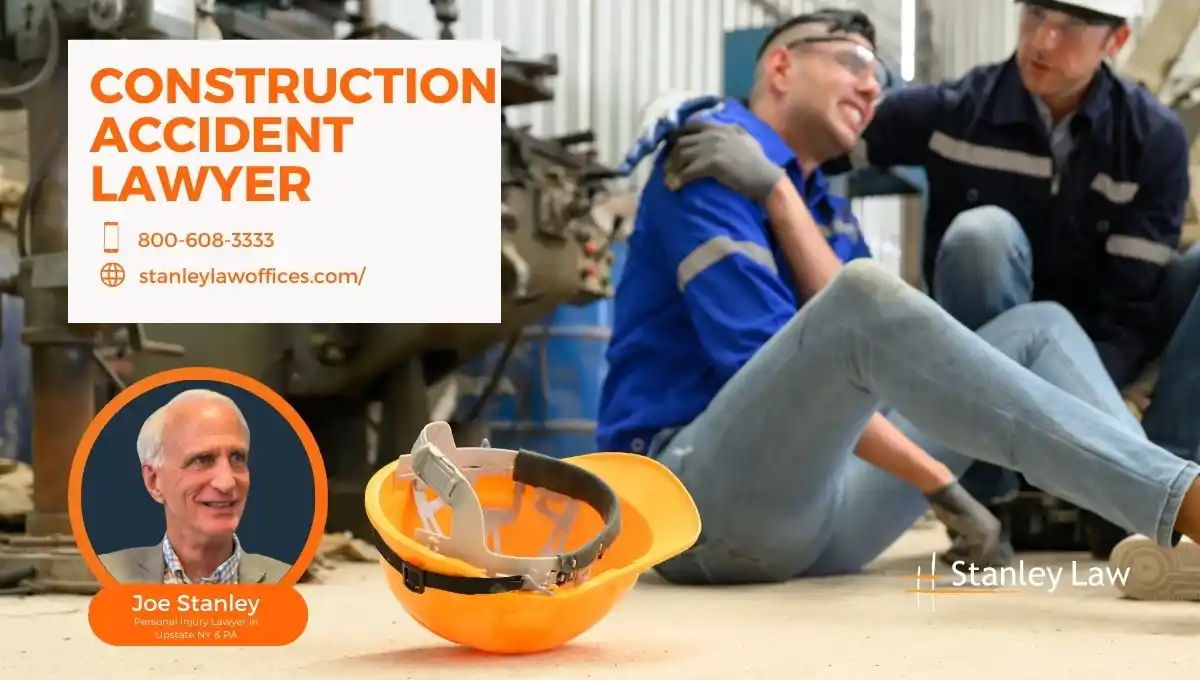Accidents on construction sites aren’t just unsettling; they come with serious legal and financial risks. Knowing how to make a construction accident report ensures you document incidents correctly, protecting workers and employers. Accurate reporting can impact investigations, insurance claims, and legal outcomes, helping you avoid costly mistakes.
If you need help documenting a construction accident properly, this guide is for you. We’ll walk you through the essential steps to create a compliant and thorough construction accident report.
Why Accurate Construction Accident Reporting Matters
Accurate construction accident reporting is essential for several reasons. It protects worker safety, ensures compliance with legal requirements, and upholds the company’s interests. Here’s why accuracy is so important:
- Legal Protection: Accurate reports protect workers and companies in legal disputes, reducing risks.
- Regulatory Compliance: Proper reporting ensures compliance with OSHA and state regulations, helping avoid fines or penalties.
- Insurance and Claims: Detailed reports speed up workers’ compensation and insurance claims, preventing delays or denials.
- Preventing Future Incidents: Accurate reports help identify causes and improve safety measures, reducing future accidents.
- Employee and Employer Protection: Clear documentation supports claims and protects employers from false allegations.
In short, accuracy in reporting delivers legal, financial, and safety benefits for everyone involved.
Immediate Steps After a Construction Accident
Taking immediate, correct action after a construction accident is crucial to ensuring safety and properly managing the situation. Here are the essential steps:
Ensuring Safety and Providing Medical Attention
The top priority after an accident is ensuring the safety of all workers on-site. If safe, move the injured person away from further danger and administer first aid as needed. Always call for professional medical assistance right away, even for minor injuries.
Notifying Supervisors and Authorities
After securing medical care for the injured, notify the site supervisor and safety officer immediately. Notifying regulatory authorities, such as OSHA, of more serious accidents is essential to ensure you follow proper legal protocols.
Preserving the Accident Scene
Preserve the accident scene for accurate reporting and any future investigations. Avoid moving equipment or materials unless necessary for safety. Capture photos, videos, and notes of the scene before making any changes to ensure evidence for legal and insurance purposes.

Key Components of a Construction Accident Report
When creating a construction accident report, it’s essential to include detailed and accurate information. Below are the key components every report should contain:
Incident Details (Date, Time, and Location)
Record the exact date, time, and location of the accident. This information helps establish the timeline and context, making it easier to understand where and when the incident occurred.
Accident Description
Provide a detailed account of the accident, explaining how it occurred, what events led to it, and who was involved. Be thorough in describing the sequence of events from start to finish, as this can help identify contributing factors and prevent future incidents.
Injuries and Damages
Document all injuries sustained by workers and any damage to equipment or property. Be specific about the nature and extent of the injuries, and the impact on materials or machinery. This information is critical for assessing the accident’s severity and determining follow-up actions.
Visual Evidence
Take photos and videos of the accident scene as soon as possible. Visual evidence provides crucial documentation that you can use in legal or insurance claims. Ensure you capture all relevant details before moving or cleaning up the scene.
How to Report a Construction Accident
Properly reporting a construction accident is essential for ensuring safety, processing insurance claims, and preventing future incidents. Below are the steps for reporting accidents within your organization and to external legal authorities.
Internal Reporting Procedures
Following your company’s internal reporting procedures is essential to address the incident effectively. Here’s a step-by-step guide to filing a report within your organization:
- Notify Immediate Supervisor: As soon as the accident occurs, inform your immediate supervisor. Provide a brief overview of the incident to initiate the internal reporting process.
- Complete the Accident Report Form: If your organization has an official accident report form, fill it out. Be sure to include all essential details, such as the date, time, location, and a thorough description of what happened.
- Include Witness Statements: Collect statements from any witnesses to the accident. Their firsthand accounts can provide valuable insight and support your version of the events.
- Document Injuries and Damages: Record all injuries and any damage to equipment or property. Be specific about the nature and extent of each injury and damage to understand the incident’s impact fully.
- Submit the Report: Promptly submit the completed report to your supervisor or designated safety officer within 24 hours. Most companies require this.
- Follow-up: Confirm that your report has been received and reviewed. Keep a copy for your records and follow up on any further actions or investigations that may be required.
External Reporting Requirements
In addition to internal procedures following a construction accident, external reporting is critical to ensure compliance with legal and insurance obligations.
Key external reporting steps include:
- OSHA Reporting: For accidents resulting in a fatality or serious injury, you must notify OSHA within 8 hours of the incident. Reports can be submitted online, by phone, or by fax.
- Workers’ Compensation: Notify your workers’ compensation insurance provider about the accident. Provide details of the incident, including the injuries sustained and any medical treatment received. Be sure to meet any form and deadline requirements for the claims process.
- State Requirements: Specific state regulations may also apply. For example, in New York, you must report work-related injuries to the New York State Workers’ Compensation Board using Form C-2F within 10 days of the accident.

Legal Considerations When Filing a Construction Accident Report
Accurate construction accident reporting is essential for immediate safety and long-term legal protection. Properly filed reports ensure compliance with regulations, help prevent legal issues, and protect your rights. Here’s what you need to consider:
Compliance with Safety Regulations
Accident reports must adhere to OSHA guidelines to ensure compliance with safety regulations. OSHA mandates that companies report serious incidents, such as fatalities or major injuries, within strict timelines—usually within 8 hours for fatalities and 24 hours for serious injuries. Failing to meet these deadlines can result in substantial fines, penalties, and potential lawsuits.
Legal Ramifications of Inaccurate Reporting
Inaccurate or incomplete reports can lead to serious legal consequences. Missing or false information may result in fines, workers’ compensation claims denial, or even lawsuits. Inaccurate reporting can also weaken the legal standing of the injured worker and the employer if the case escalates to court. Additionally, misreporting can prompt further investigations and tarnish the company’s reputation.
Steps After Reporting
Once you’ve filed the report, follow up to ensure the initiation of all necessary actions. It includes staying in touch with your insurance provider, medical professionals, and any regulatory bodies involved in your case. Keep copies of all documents related to the accident, including medical reports, witness statements, and communication with insurers. Be prepared to provide additional information as needed to support your case.
Common Mistakes to Avoid in Construction Accident Reports
Filing a construction accident report requires attention to detail. Avoiding common mistakes is essential to protect your rights and ensure a smooth claims process. Here’s what to watch out for:
Vague or Incomplete Information
One of the most significant mistakes is providing vague or incomplete details in your report. Missing key information or offering unclear descriptions can weaken your legal case or delay your insurance claim. Thorough and accurate documentation is crucial to effectively support your claim and ensure proper recording of all facts.
Delayed Reporting
Another common error is delaying your accident report. Timely reporting is essential to document the incident and meet legal requirements accurately. Delays can make it more difficult to prove the facts of the case, which may affect your ability to receive benefits or pursue legal action. Filing the report as soon as possible helps protect your rights and prevents complications later.
Resources for Creating Effective Construction Accident Reports
Utilizing the right resources when creating a construction accident report can simplify the process and ensure accuracy. Here’s a guide to essential tools and resources:
Report Templates and Forms
Using pre-made templates and forms simplifies the reporting process. Consider these options:
- OSHA Forms: For serious accidents, OSHA requires using Form 301 (Injury and Illness Incident Report).
- New York State Form C-2F: For work-related injuries in New York, use Form C-2F to report to the New York State Workers’ Compensation Board
Tools and Software
Various software tools can help automate and organize the accident reporting process:
- Form.com: Customizable forms for creating comprehensive construction accident reports.
- Template.net: Offers various customizable, downloadable templates for accident reports.
- Zoho Forms: Custom form creation with data capture features for accident reporting.
- JotForm: Provides customizable accident report templates to facilitate data collection and reporting.
These tools ensure efficient and accurate documentation of accidents.
Checklists for Report Accuracy
Using a checklist ensures you capture all the critical details in your report. Be sure to include:
- Accurate Incident Details: Date, time, and location of the accident.
- Detailed Accident Description: A thorough account of the incident, including the cause and contributing factors.
- Injury and Damage Information: Detailed records of injuries and property damage.
- Witness Statements: Statements from any witnesses to the accident.
- Visual Evidence: Photos or videos of the accident scene.
- Compliance Documentation: Ensure all required forms and reports are completed and submitted.
These resources and tools will help you create comprehensive, accurate reports, improving the likelihood of a smooth claims process and legal resolution.
How Stanley Law Office Can Help
Filing a construction accident report involves complex regulations and requires meticulous accuracy. Legal guidance is essential to ensure proper filing and compliance. Here’s how Stanley Law Office can assist you:
Ensuring Proper Report Filing and Compliance
Our experienced legal team ensures your construction accident report is filed correctly and adheres to all applicable legal requirements. We guide you through OSHA and New York State regulations, ensuring your report is thorough, compliant, and error-free. It minimizes the risk of delays or complications with your claim and ensures accurate documentation of all necessary details.
Our Services for Construction Accident Cases
- Report Review: We review your accident report to confirm its accuracy and completeness.
- Legal Advice: We provide expert guidance on handling your case, including reporting procedures and interactions with insurance companies.
- Documentation Support: Our team helps you gather and organize critical documents, such as medical records, witness statements, and accident reports.
- Claim Assistance: We assist with the workers’ compensation process and manage any other legal claims related to the accident.
- Representation: If your case goes to court, we will represent you to protect your rights and seek the compensation you deserve.
Stanley Law Office supports you through every step of your construction accident case, ensuring you receive the legal guidance and compensation you’re entitled to. Contact us today for the legal support you need with your construction accident claim.

Conclusion
Timely and accurate construction accident reporting is essential for legal and insurance purposes. Proper documentation ensures compliance with safety regulations, protects against potential legal issues, and supports smooth claims processing.
Seeking professional guidance can make all the difference. An experienced legal team of New York construction site accident attorneys will ensure that your report complies with regulatory requirements and fully supports you throughout the claims process and legal proceedings. Stanley Law Offices has offices across New York, providing expert guidance for construction accident claims. We are here to ensure that your report complies with all regulatory requirements while fully supporting you throughout the claims process and any legal proceedings.
We serve the victims of construction accidents in the following areas:
- Syracuse construction accident lawyer
- Rochester construction accident lawyer
- Binghamton construction accident lawyer
- Watertown construction accident lawyer
- Oneonta construction accident lawyer
Contact us today for trusted legal counsel and personalized support throughout your recovery and claims process. Also, if you need help with your construction accident report? Contact Stanley Law Office for professional guidance today!
How to Report Construction Accidents – FAQs
What Accidents Should be Reported?
You should report any construction accident resulting in injury or property damage, including minor and severe injuries, equipment accidents, and incidents that could affect construction site safety.
How Long Do I Have to Report a Construction Accident?
You must report a construction accident to OSHA within 8 hours if it results in fatalities or serious injuries. For workers’ compensation in New York, you must report the injury to your employer and file with the New York State Workers’ Compensation Board using Form C-2F within 10 days.
Can I be Fired for Reporting a Construction Accident?
No, it is illegal for employers to retaliate against employees for reporting a construction accident. OSHA regulations and New York State laws protect workers from discrimination or termination for reporting workplace injuries or safety concerns.
Do I Need a Lawyer to File a Construction Accident Report?
While you can file a construction accident report independently, consulting a lawyer ensures your report is accurate, complies with all legal requirements, and assists with claims.
How Can I Sue My Employer For a Construction Injury?
You must file a lawsuit to prove negligence to sue your employer for a construction injury. Consult a construction accident lawyer to assess your case and guide you through the legal process.

